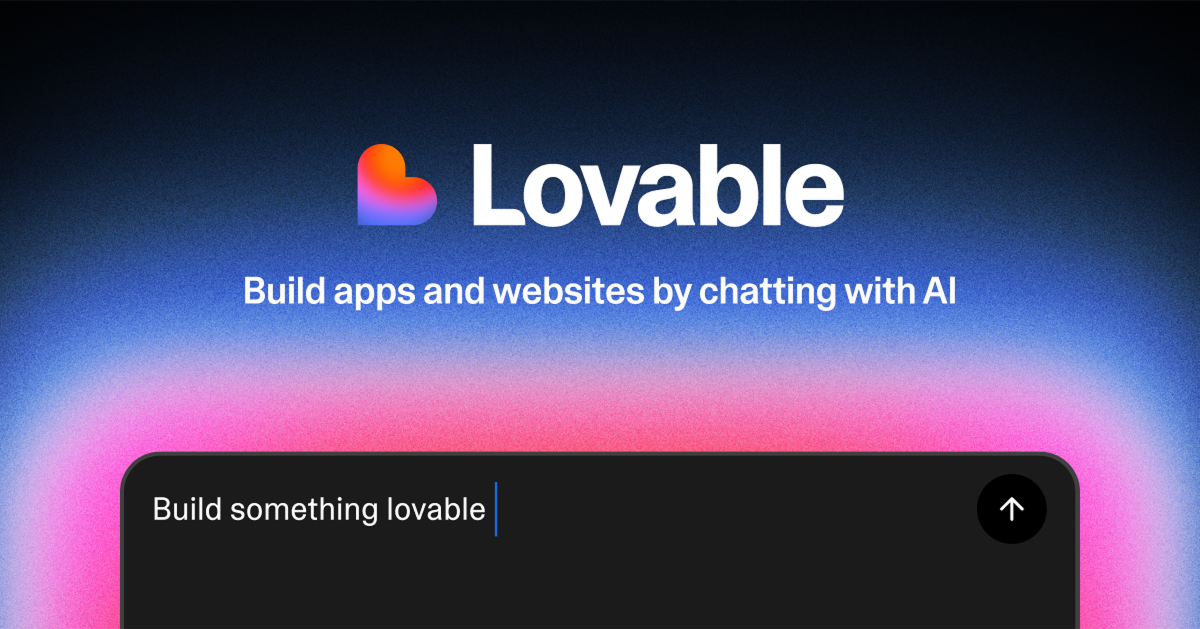Producing original content is a resource-intensive endeavor that requires a lot of time, energy, and money.
Moreover, there’s already a ton of free content out there, so it’s probably safe to say that we are approaching what Mark Schaefer dubbed Content Shock.
The supply of content is ever-increasing but the demand for content remains the same because our capacity to consume it is limited.
Sooner or later, we will reach the point where content marketing will cease to be effective due to this mismatch between supply and demand (Content Shock).
What is Content Curation?
Content curation is the practice of sharing content produced by someone else with your audience.
This isn’t a new concept: art galleries curate works of art, fashion editors curate clothing trends, radio stations curate music, etc.
Curating digital content is becoming increasingly popular, especially in the email marketing space.
Say, Tim Ferris shares various recommendations on his 5-Bullet Friday newsletter, including links to interesting digital content such as articles, podcasts, and YouTube videos.
This newsletter has 1.5M+ subscribers, so it’s clear that this approach resonates with his audience.
Also, some people are willing to pay to get hand-picked, high-quality content, so it’s possible to build an entire business around content curation.
For example, the Morning Brew newsletter has 4 million subscribers, generates $50 million in revenue and looks into M&A. All they do is curate news!

Why Should Brands Get into Content Curation?
Content curation makes perfect sense in the context of ever-increasing supply and stable demand for content:
Providing value to your audience
While content curation does require an investment of time, energy, and money, it’s nowhere near as resource-intensive as content creation.
It allows brands to provide value to their audiences without having to produce original content from scratch.
This is especially helpful when it comes to keeping in touch with your audience via email marketing.
Ideally, you want to reach out to your email subscribers at least once a week, otherwise, people might forget who you are.
However, the reality is that creating high-quality, original content at that pace may not be sustainable if you are operating under severe resource constraints (e.g. juggling a family, a full-time job, and a side hustle).
Meanwhile, sending out a weekly newsletter with content recommendations is much more doable. And it still provides value to your subscribers!
Building trust via social proof
93% of marketers agree that consumers trust content created by customers more than content created by brands.
This means that sharing other people’s content on social media can be more effective than posting your own if it provides social proof.
For example: Let’s say that you have an ecommerce business where you sell hiking backpacks.
If a customer posts a photo of themselves on a trail with one of your backpacks and tags you, then sharing that photo with your Instagram audience would provide social proof.
When it comes to building trust, it would be more effective than posting your own photo promoting that same backpack.
Building relationships in your industry
Content curation can be a great way to build relationships with influencers, journalists, and other brands in your space. Everyone appreciates a shout-out!
And you never know what opportunities this might lead to down the road – media features, affiliate partnerships, co-branded partnerships (71% of consumers enjoy them!), etc.
What do consumers get out of content curation?
Content curation helps people discover high-quality, interesting, relevant content without having to search for it themselves.
While there’s already more content out there than one could consume in a lifetime, it’s probably safe to say that most of it is of dubious quality.
That’s why there’s real value in someone else separating the wheat from the chaff and then presenting their best finds to you.
Given that content curation is beneficial to both brands and consumers, it’s hardly surprising that the global content curation market is expected to reach US $ 2,427.60 Mn by the end of 2027.
It definitely makes sense to incorporate it into your content marketing strategy if you haven’t done so already.
Best Content Curation Formats
There are three most popular content curation channels:
- Website. You can curate content on your website by posting “best of” round-ups, sharing content collections, creating content libraries, etc.
- Email. Arguably, newsletters are the best way to share curated content, judging by the popularity of both free and paid ones that do that.
Also, paid newsletters are the easiest way to build a business that revolves around content curation.
- Social media. You can repost user-generated content created by your customers, share the work of other people in your industry, and curate your own resources by promoting content from your blog, podcast, YouTube, etc.
16 Content Curation Examples and Why They Work
Now let’s take a look at some great content curation examples:
1. Webflow Blog
Webflow has created various topic-based content collections that feature their best content.
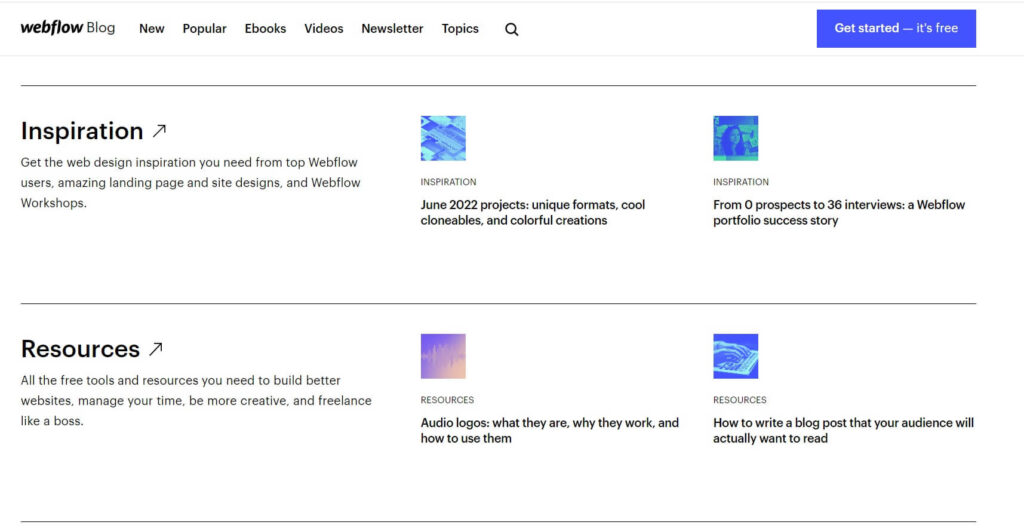
The company also uses a content architecture that makes it easy for site visitors to find relevant content without having to wade through everything else.
You can simply go to the “Topics” section and choose a category that interests you.
Why this works: Webflow serves several distinct customer segments, so this approach allows them to direct users to content categories that are the most relevant to them.
2. Pocket Hits Newsletter
Pocket is an app that allows you to bookmark and save articles from the web so that you could read them later.

The company also helps people discover interesting reads via its daily Pocket Hits newsletter which has millions of subscribers.
Why this works: People are using Pocket to save articles, so the company always knows which stories are the most popular at any given moment. This gives them a unique competitive advantage when it comes to content curation.
3. Daily Skimm
Daily Skimm is a business that revolves around content curation – they share daily news in a digestible manner via their email newsletter.
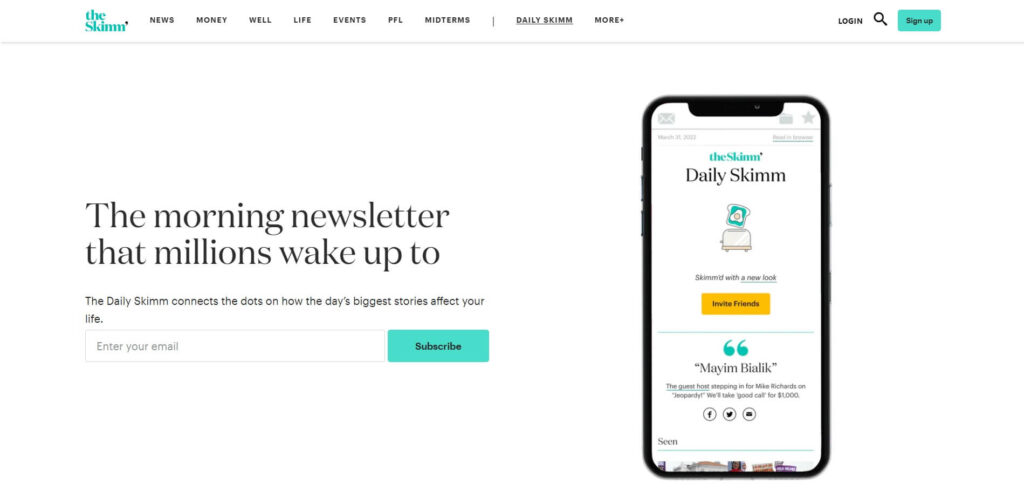
The company also has a very memorable brand voice which helps it stand out from the competition.
Why this works: People are feeling burnt out when it comes to following the news, but they still want to keep up with current events. A daily newsletter provides a solution to this problem.
4. Raisin Bread by MarketerHire
MarketerHire is a platform that connects brands that are seeking to hire a marketer with proven marketers that have relevant expertise.
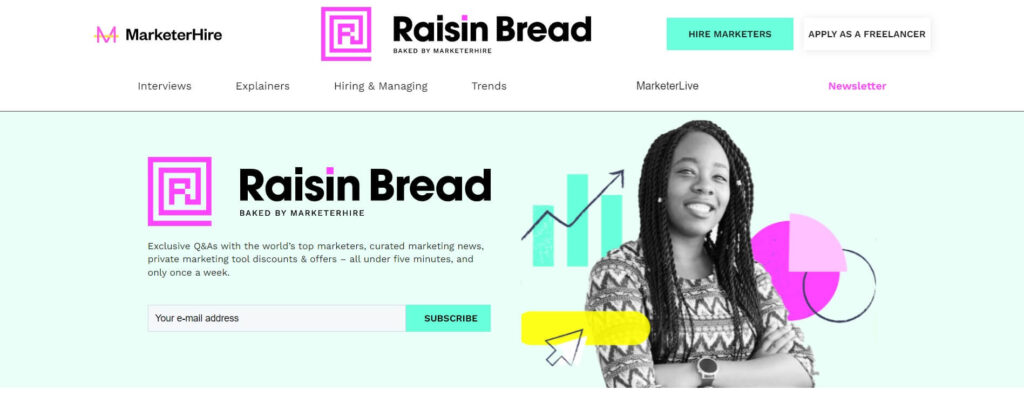
The company has a newsletter called Raisin Bread where they curate content that marketers find interesting – marketing articles, statistics, news, etc.
Why this works: Raisin Bread serves as a way to source marketers for MarketingHire.
5. Grow And Convert Blog
Grow and Convert is a content marketing agency that has a popular blog on the subject.

They have a separate Top Articles section where they feature the best pieces from their blog.
Why this works: It allows them to show potential clients their best content and leave a great first impression.
6. McKinsey Featured Insights
McKinsey has a Featured Insights tab in their navigation bar that leads to a drop-down menu where you can choose a topic that you are interested in.
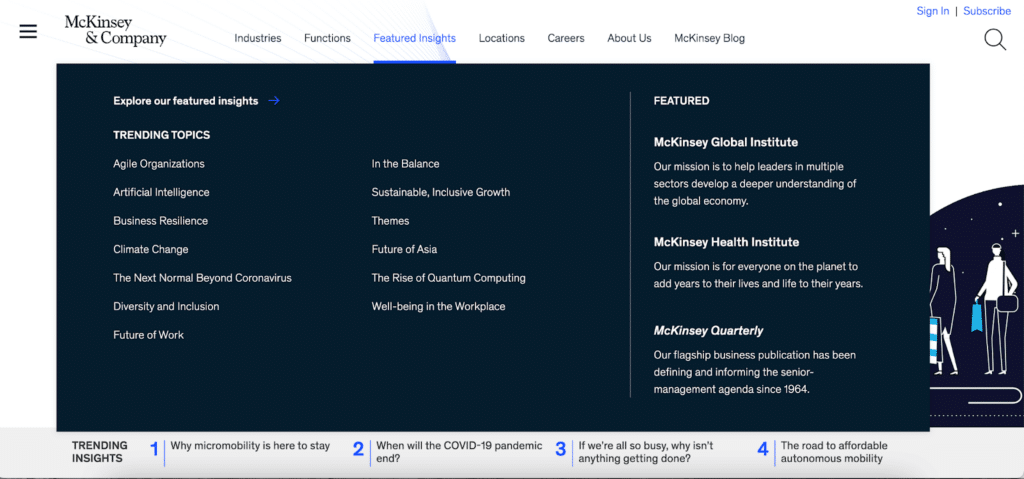
You can also go to the main Featured Insights page where you can explore all content regardless of the category.
Why this works: McKinsey has various service lines and produces a lot of content for different industries. This architecture helps them direct potential customers to the content that is relevant to them.
7. Buffer Social Media Newsletter
Buffer is one of the most popular social media scheduling tools out there.
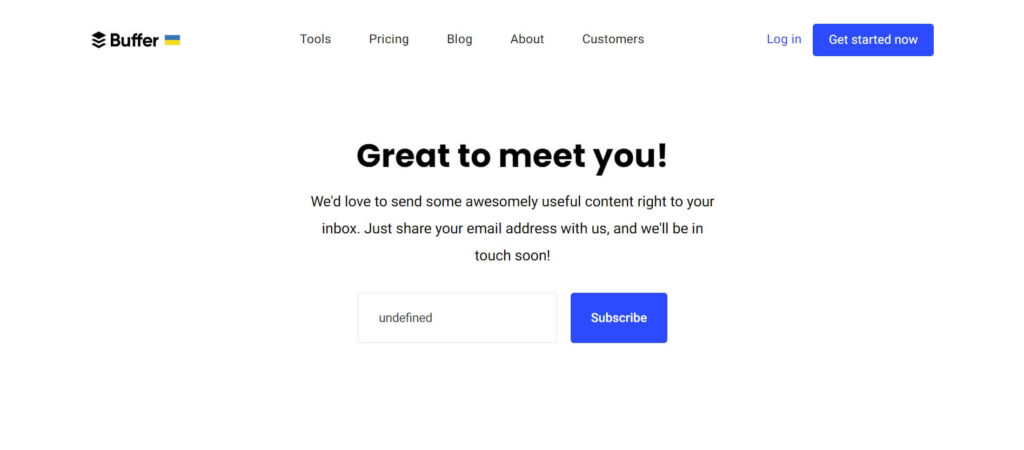
The company has a newsletter where they curate content related to social media.
Why this works: Buffer’s target audience is individuals and brands that want to build a following on social media, so a newsletter that offers relevant content serves as a customer acquisition channel.
8. New York Times Wirecutter
Wirecutter started out as an independent publication but was then acquired by The New York Times back in 2016.

They curate “best products” lists in a wide variety of categories from mattresses to appliances to computers.
Why this works: Nowadays, consumers have seemingly unlimited options for pretty much everything, which can feel overwhelming when you need to make a purchase decision. Wirecutter’s trustworthy, in-depth product reviews can help simplify the buying process.
9. Typology
Typology is a cosmetics brand that does a great job at curating their own products.
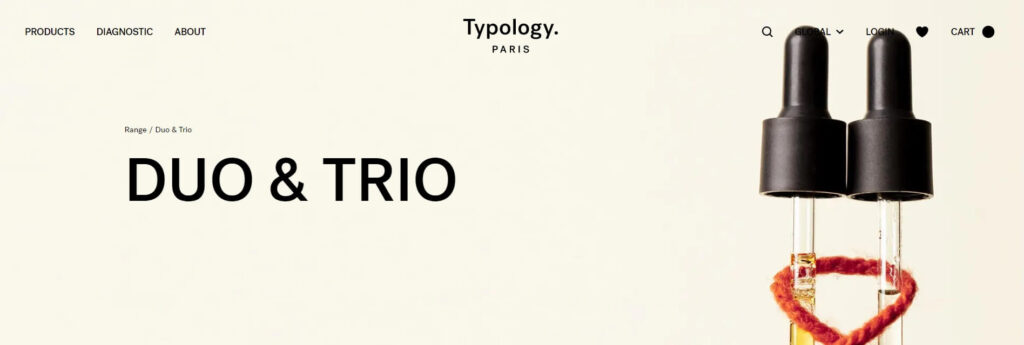
Not only do they categorize them by specific customer concerns, but they also put together product duos and trios (e.g. a hair repair kit that includes a shampoo and a hair mask).
Why this works: Beauty experts can easily put together a kit designed to solve a specific problem, but for the rest of us trying to choose the right products can feel overwhelming. Typology solves this issue by offering pre-made kits for specific problems.
10. Really Good Emails
As the name suggests, Really Good Emails curates, well, really good emails.
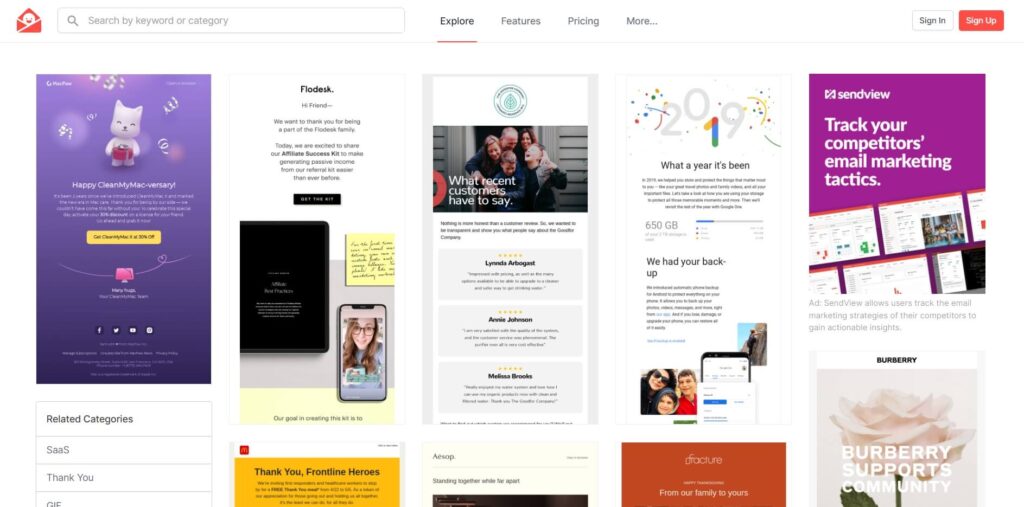
This can be helpful for email marketers who are looking for inspiration because these email collections provide an insight into how established, well-known brands approach email marketing.
Why this works: Really Good Emails started out as a content curation website, but now they are selling email design software that allows people to collaborate on creating emails. This is a great example of how you can build an audience by curating content, then monetize it later once you come up with a product idea.
11. Starter Story
Starter Story is a publication that features various business case studies.
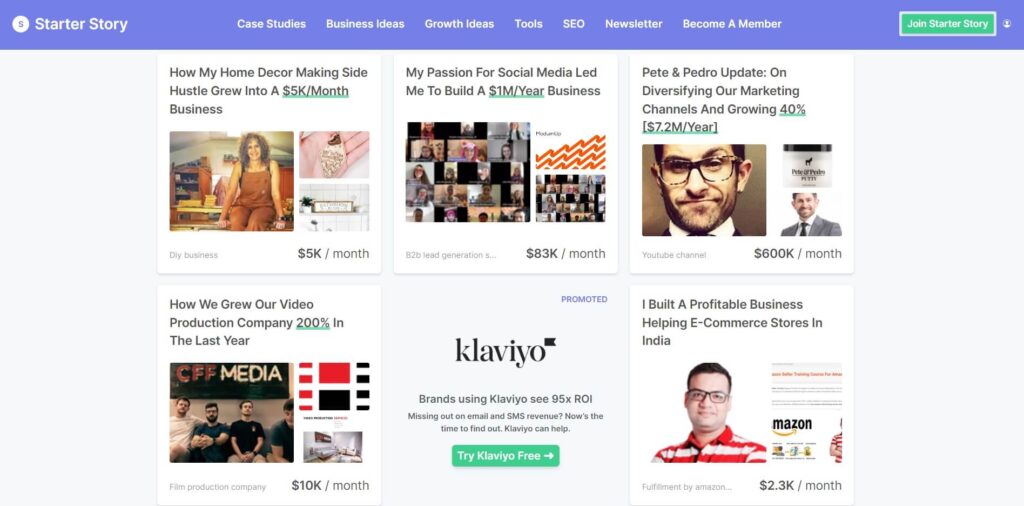
In addition to that, it curates business ideas, growth ideas, and various tools, which can be helpful to people who want to start their own businesses.
Why this works: Starter Story built an audience by publishing case studies, then used content curation to monetize it – their growth idea database that features 200+ strategies for growing a business is a subscription product.
12. Airbnb on Instagram
Airbnb curates photos of various beautiful, interesting, and sometimes even bizarre abodes from all over the world on their Instagram.

Recently, they started adding “Did you know?” facts to some of the photos to promote their new category filters.
Why this works: Airbnb caters to travelers, so curating photos of various homes helps to not only promote what’s available on their website but also to inspire wanderlust.
13. SparkToro Trending Section
SparkToro is a popular audience research tool.
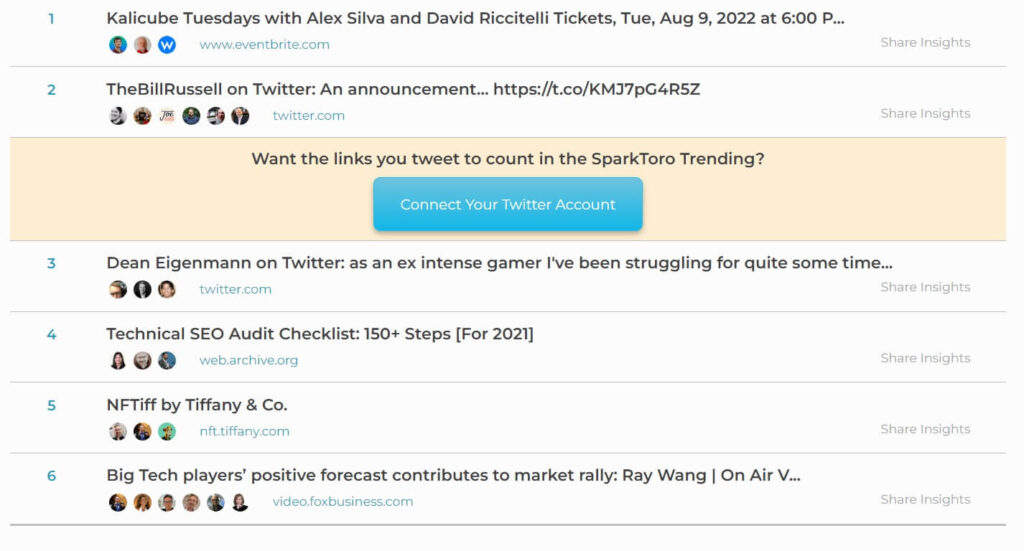
They have a “Trending” section on their website which is supposed to serve as “the front page of the web marketing world”.
On it, you can see curated content on this subject ranked by popularity, which is helpful if you want to keep up with the latest online marketing trends.
Why this works: SparkToro’s “Trending” section helps the company to attract potential customers because their target audience is online marketers.
14. Asos Instagram
Asos clothing brand uses Instagram to curate user-generated content that features their customers wearing Asos apparel.

Why this works: User-generated content serves as social proof – it reassures potential customers that Asos is legit and allows them to see how the clothes look on regular people.
15. Glow Recipe TikTok
Glow Recipe is a skincare company that curates user-generated content on TikTok.
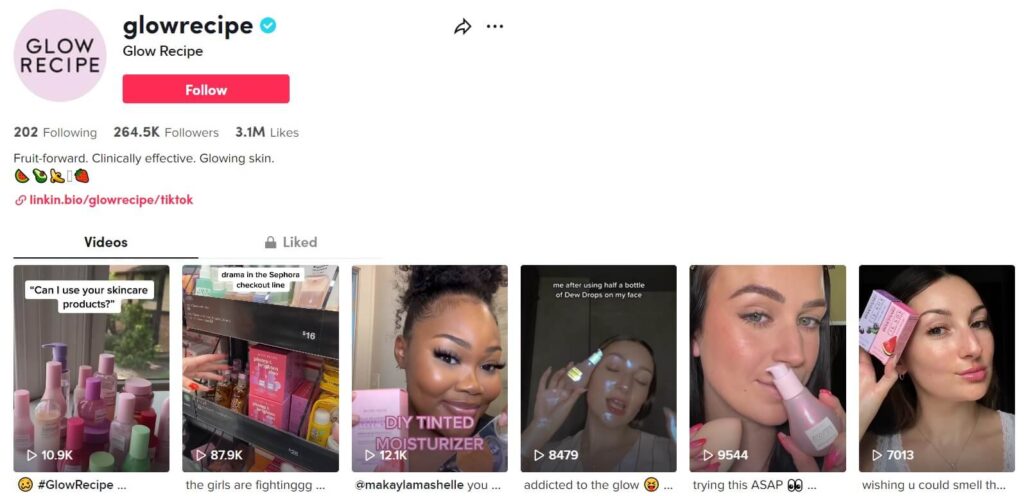
Their TikTok page primarily features videos where customers demonstrate Glow Recipe products and collabs with social media influencers.
Why this works: Again, user-generated content serves as social proof, so curating it on the company’s social media makes sense!
16. HP on LinkedIn
HP is active on LinkedIn where they not only share company news, post jobs, and announce partnerships, but also curate employee stories.

Why this works: Featuring articles about its employees helps HP add a human touch to its corporate brand image.
How to Get Started with Content Curation
So you decided to add content curation to your content marketing strategy. But where should you start?
1. Decide On Your Goals
The old adage “you can’t hit the target if you don’t know what it is” applies here. What do you want to get out of curating content?
We recommend setting a big goal + corresponding Key Performance Indicators (KPIs).
For example:
Goal: Increase brand awareness
KPIs:
- Average newsletter open rate – 60%
- 1,000 new subscribers in 3 months
- Average CTA to check product – 5%
2. Select The Optimal Format
The three most popular content curation channels are websites, email newsletters, and social media platforms.
We recommend curating content on all of them, as that might help you maximize your reach.
That being said, it doesn’t always make sense to share the same piece of relevant content across all channels.
You might want to take time to analyze your user flows, customer journeys, and content consumption patterns to better understand what resonates with your audience.
This will allow you to approach content curation strategically and get the most out of your content marketing efforts.
3. Create an Editorial Calendar
Successful content curation requires forethought – you can’t just post whatever you want whenever you feel like it and expect great results.
That’s why we recommend creating an editorial calendar that provides an overview of your entire content marketing strategy, including your content curation strategy.
Here are some things to consider when it comes to content curation:
Original content vs. curated content ratio
This will depend on your industry, the resources available to you, and the expectations of your audience.
You can start with a 50/50 ratio, then adjust as you go.
Sourcing high-quality, relevant content
Curating content isn’t as easy as it might seem – regularly finding something worth sharing with your audience might prove to be quite a challenge. You need to account for that and schedule time for it.
However, you’ll soon learn which blogs, podcasts, YouTube channels, etc. consistently produce top-notch content, so coming up with recommendations will become less time-consuming because you’ll know where to look.
Also, content aggregators can be super helpful here. Say, if you are in the tech space, then Hacker News provides a constant stream of relevant content. Plus, the upvote system allows you to see which content is the most popular, making it easier to decide which articles to share with your audience.
And make it a habit to bookmark interesting stuff as you are browsing the web – you probably already stumble on valuable content on a regular basis but then forget about it. The Pocket app might come in handy here.
Who’s responsible for content curation?
If you are a solopreneur, then this is straightforward – you are responsible for curating content because there’s no one else.
But if you already have a team, then it’s important to assign this task to the right person/people.
Typically, the responsibility of curating content falls on content marketers, though in larger organizations it is often divided among several people depending on the channel:
The blog editor curates content on the company’s blog, the social media manager shares curated content on social media accounts, etc.
What’s important is that everyone knows who is responsible for what.
4. Pick Your Content Curation Tool
There are plenty of content curation tools out there that can make your life easier.
Here are some of our favorites:
For content discovery:
For social media content curation:
For scheduling content on social media:
5. Execute and Analyze
You can’t possibly know what works and what doesn’t until you try a bunch of things and see what happens.
We recommend experimenting with original vs. curated content ratio, different content curation channels, different curated content formats, etc.
What’s important is that you track the relevant metrics so that you can understand what resonates with your audience. This will help you get better at curating content.
Conclusions
Curated content can be a great way to provide value to your audience without having to produce original content.
It can help you get more out of blogging, social media marketing, and email marketing.
So start experimenting with it. You won’t regret it!

